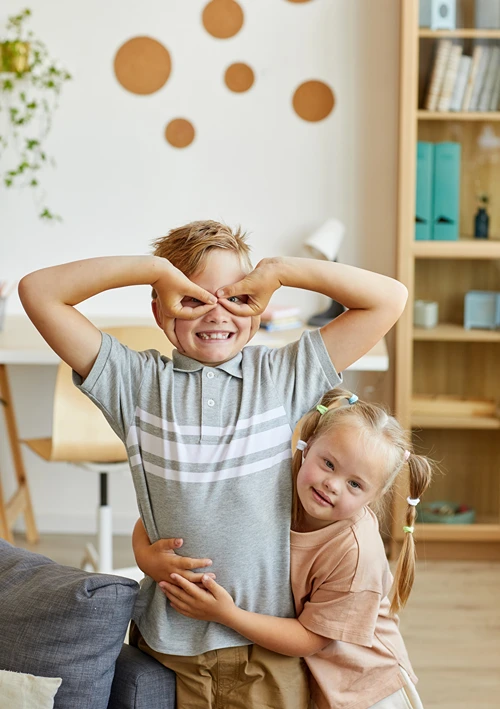Why Pediatric Safety Beds Are a Game-Changer for Families with Special Needs Children
Creating a safe and supportive environment for children with special needs is a top priority for parents and caregivers. One essential aspect of this effort is ensuring that children have the right support and equipment to feel secure, comfortable, and well-cared for in their daily lives.
Among the many tools available to enhance safety and comfort, safety beds for kids stand out as transformative solutions.
These specialized beds not only address unique challenges but also provide peace of mind to families navigating the complexities of caregiving.
Understanding Pediatric Safety Beds
Pediatric safety beds are designed specifically to meet the needs of children with medical conditions, developmental disabilities, or behavioral challenges.
Unlike traditional beds, they feature enclosed sides, padded interiors, and adjustable mechanisms to ensure safety and comfort.
These features make them essential for children prone to falls, wandering, or self-harming behaviors.
Key Features:
- High side rails or enclosed walls to prevent falls.
- Padded interiors to protect against injury during seizures or outbursts.
- Lockable doors or zippers for added security.
- Adjustable height for easier caregiver access.
Enhanced Safety: Reducing Risks at Night
For families of children with special needs, nighttime can be fraught with worry.
Many children experience sleep disturbances, seizures, or a tendency to wander. Pediatric safety beds mitigate these risks by creating a secure environment.
Benefits:
- Prevents falls and injuries with enclosed designs.
- Keeps children safely contained, reducing the risk of wandering.
- Protects against self-harming behaviors such as head-banging or pulling at medical equipment.
For example, a parent of a child with autism shared how their safety bed prevented nighttime elopement and significantly reduced injuries caused by climbing out of bed.
Improved Sleep Quality for Children and Caregivers
Sleep is important for the physical and emotional well-being of children with special needs.
However, conditions like autism or ADHD often lead to sleep irregularities. Pediatric safety beds create a calming environment conducive to better rest.
How They Help:
- Enclosed spaces reduce external stimuli such as light and noise.
- Sensory-friendly features like soft padding and calming colors promote relaxation.
- Consistent sleep routines become easier to establish within a secure setting.
Better sleep doesn’t just benefit the child—it allows caregivers to rest more easily, knowing their child is safe throughout the night.
Facilitating Medical Care at Home
Children with medical conditions often require nighttime interventions such as medication administration or tube adjustments.
Pediatric safety beds simplify these tasks by offering caregiver-friendly features.
Features That Make a Difference:
- Adjustable height for easy access during care routines.
- Openings or doors that allow caregivers to reach the child without disturbing their sleep.
- Secure enclosures that reduce the need for physical restraints during medical procedures.
These features enhance both the efficiency of care and the comfort of the child.
Promoting Independence in Children
While safety is paramount, fostering independence is equally important.
Pediatric safety beds strike this balance by providing secure environments that still allow children some autonomy.
Examples:
- Some models include doors that older children can open themselves when appropriate.
- Adjustable designs grow with the child, supporting their development over time.
- Features like sensory elements encourage self-soothing behaviors.
This combination helps children feel empowered while ensuring their safety remains uncompromised.
A Lifesaver for Families Facing Unique Challenges
Every family’s journey is different, but pediatric safety beds address a wide range of challenges faced by those caring for children with special needs:
- For Children Prone to Wandering: High side rails and lockable enclosures prevent dangerous nighttime escapades.
- For Children with Sensory Sensitivities: Customizable options like soft textures or calming lights create a soothing atmosphere.
- For Medically Fragile Children: Protective barriers safeguard against accidental dislodging of medical devices during sleep.
One parent described how transitioning their child from an unsafe makeshift sleeping arrangement to a pediatric safety bed transformed their household dynamics—bringing relief and restoring restful nights for everyone involved.
Durability and Long-Term Value
Pediatric safety beds are built to last, making them worthwhile investments for families.
High-quality materials ensure they can withstand daily use while maintaining their functionality and appearance over time.
Why This Matters:
- Durable designs reduce the need for frequent replacements.
- Adjustable features accommodate growth, extending usability through different stages of childhood.
- Easy maintenance ensures hygiene and longevity.
Families often find that these beds pay for themselves by reducing medical costs associated with injuries or poor sleep quality.
Peace of Mind: The Ultimate Benefit
Perhaps the most significant impact of pediatric safety beds is the peace of mind they provide.
Knowing that their child is safe allows parents and caregivers to focus on other aspects of life without constant worry about nighttime accidents or disturbances.
This reassurance extends beyond parents—siblings and extended family members also benefit from a calmer household environment.
Conclusion
Pediatric safety beds are more than just furniture; they are essential tools that address the unique needs of children with special requirements while supporting their families.
By enhancing safety, improving sleep quality, facilitating care, promoting independence, and offering long-term value, these beds truly are game changers for families navigating the challenges of caregiving.
For parents seeking effective solutions tailored to their child’s well-being, investing in a pediatric safety bed can make all the difference in creating a secure and nurturing home environment.












